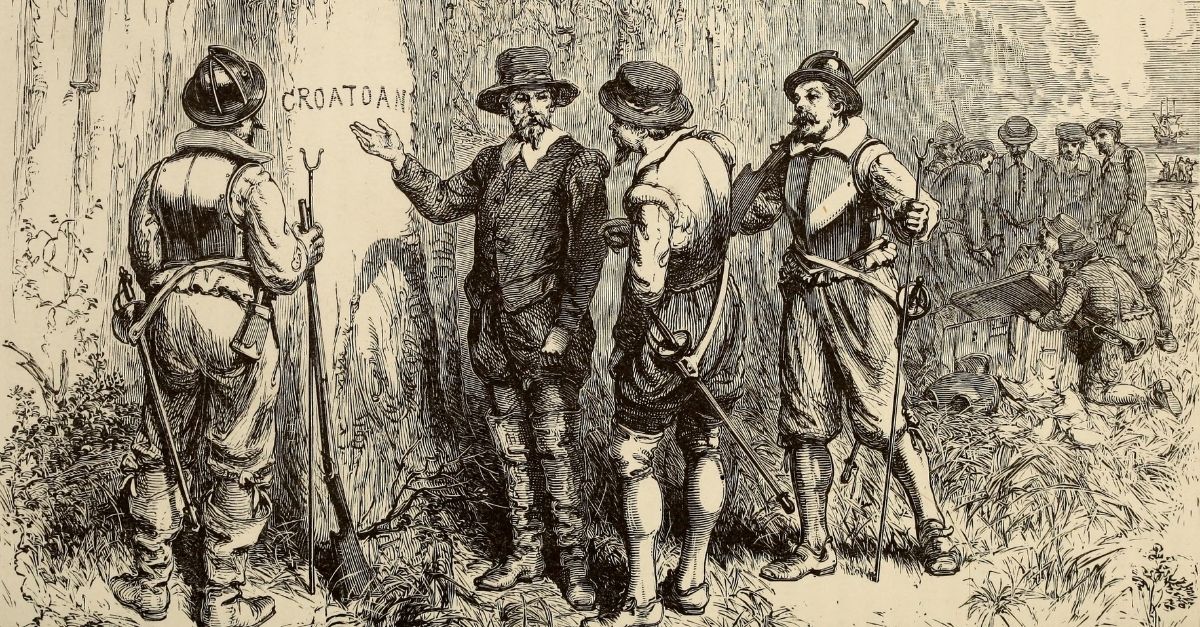The lost colony of Roanoke is one of the weirdest events that happened in American History. The first American settlement in the “new world” was located in what is known as modern-day North Carolina, mysteriously disappeared one day in 1590. The establishment was founded by English explorer Sir Walter Raleigh, as “the cittie of Raleigh” on Roanoke Island in 1587. The city was inhabited by 155 women, men, and children, mostly middle-class people from London.
Videos by Rare
Roanoke Island
When Governor John White left for England to replenish supplies for Roanoke Island, most settlers were hesitant. He was leaving behind his daughter and granddaughter. John White was gone for almost three years due to Queen Elizabeth I’s invitation to England, banning ships from departing. After many failed voyages, John White finally made it back to Roanoak to find that no one was there.
As the story goes, settlers only left behind a couple of carvings. “Cro” carved into a tree and “Croatoan” in the gatepost. There were no bodies, no white cross engraved on the gatepost as White had requested in the event of danger. But there was also nothing else to signal to latecomers what had happened to the lost colony of Roanoke. Over the years, Archeologists, Americans, and historians alike have been clamoring for answers.
Survival Theories
One of the theories of what became of the lost setters of Roanoke was that they were absorbed into a friendly neighboring native American tribe. Another tribe also wiped out the same tribe. Another theory starts with the words carved near and at the entrance of the settlement. Since “Croatoan” was the first name of the North Carolina Hatteras Island, some assumed that meant that the settlers moved there. If this is the case, perhaps the lost colony of Roanoke was never lost. As recently as 2013, archaeologists started excavating Hatteras Island, according to Scott Dawson. His family is a native on the island, and he’s president of the Croatoan Archeological Society. Professor Mark Horton helped with the excavations, claimed that the move to Hatteras Island was the next natural move.
Recently, a spot has been found there that serves as evidence that colonists did settle on Hatteras after all. According to findings, “We found not only evidence of mixed architecture of houses but also metallurgy, where they had blacksmith shops and were also working in copper and lead, and this continued right on into the 1600s,” the items mentioned above included Mismatched gun parts; since the settlers were out of tools, they were repurposing items. When put that way, it all seems so simple. But, boy if that centennial-year-old mystery wasn’t a rough one!



